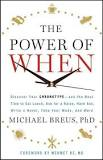What-Good-Does-That-Do-Me Blog marketing

I think I could write an entire chapter in a content marketing textbook based on the ShaneCo radio commercial about diamond jewelry. I’d name it “What-Good-Does-That-Do-Me Blog Marketing”.
You see, in his “You’ve got a friend in the diamond business” commercials, Tom Shane often mentions the fact that he goes directly to Bangkok to seek out the most beautiful colored diamonds. (So far, nothing new or revolutionary about that – most companies’ commercials mention special value propositions, things that set the sponsoring company apart from its competitors.) Only problem is, potential customers are left wondering “So what?”, mentally tuning in to Radio WIIFM – you know, What’s In It For Me?
Shane’s right on top of that one, answering the question even before it’s asked: Bangkok, Thailand is the world center for colored gemstones he explains. And so he, as an authority on sapphires and other colored gemstones, personally travels there throughout the year to personally hand-select every stone. As if that weren’t enough, Shane goes on to explain, he then has many of the stones recut to maximize their value and beauty. That’s what’s in it for the customer about Shane’s trips to Bangkok, he makes clear.
For blogs to be effective, they must serve as positioning statements. The visit has to conclude with readers understanding not only what your value proposition is, but exactly why that should make any difference to them. Blog content writers need to remember this reality: Prospects are always mentally posing the “What’s In It For Me?” question. What’s the benefit in this for ME? How will MY interests be protected and served if I choose to do business with you or become your client or patient? What will you do to keep ME “safe” from risk?
But, even in a face-to-face selling situation, buyers rarely completely and accurately articulate all their concerns. True, our blog readers went online searching for answers to questions and solutions for dilemmas they’re facing. Still, I believe, blog writing for business will succeed only if two things are apparent to readers, and in the order presented here:
- It’s clear you (the business owner or professional practitioner) understand online searchers’ concerns and needs
- You and your staff have the experience, the information, the products, and the services to solve exactly those problems and meet precisely those needs.
The third ingredient, though –whether we’re dealing with a radio commercial or a blog post, has to be answering – EVEN BEFORE IT’S ASKED – this question:
If YOU go to Bangkok, what good does that do ME?



 Those word “skeletons” can be use, I explained:
Those word “skeletons” can be use, I explained:
Follow us online!